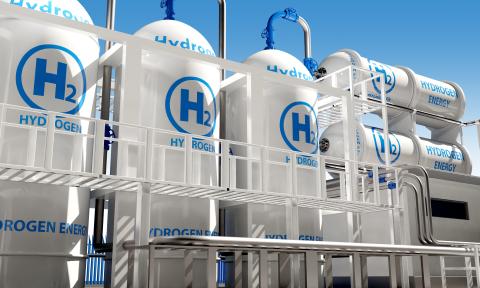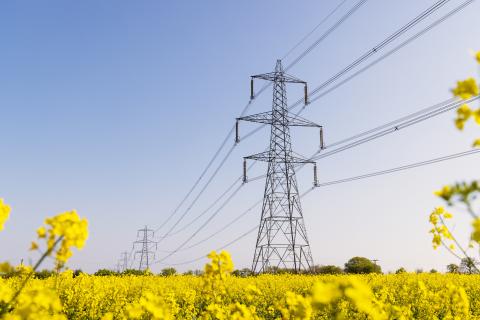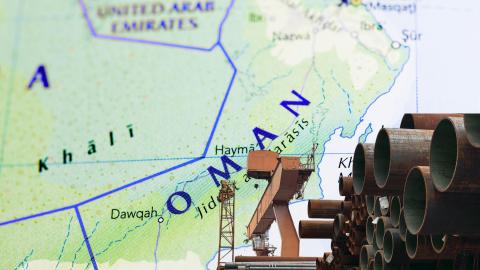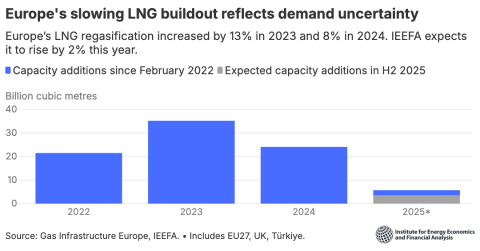IEEFA Update: 2 Out-of-State Potential Navajo Generating Station Buyers Face Long Odds
A research brief published today by the Institute for Energy Economics and Financial Analysis details six business risks that would likely prevent the Navajo Generating Station (NGS) from remaining a viable operation if it is kept open after its scheduled retirement at the end of 2019.
The memo comes as talks have surfaced with potential joint buyers, who have been identified in emails with Arizona officials as Avenue Capital Group, a New York hedge fund, and Middle River Power, a Chicago private equity group.
Competition will likely keep an aging facility from remaining a going concern, even under new management.
The memo — “Six Insurmountable Business Risks to Keeping Navajo Generating Station Open Past 2019″ — describes the following barriers to success:
Risk No. 1: Continued Low Natural Gas Prices
Natural gas prices at the SoCal Border declined to less than $3 per MMBTU in 2017. Current futures prices show that the market expects gas prices to remain very low for at least the next nine years. This would undermine the profitability of NGS by reducing fuel costs for the natural gas plants with which NGS competes and by keeping energy market prices low.
Risk No. 2: Continued Low Energy Market Power Prices
Energy market power prices at the Palo Verde Hub have been low in recent years. Current forward prices show that the market expects these prices to remain flat for the next few years and then to increase slowly over time, but remain relatively low through 2027, a trend that makes NGS-produce power uncompetitive.
Risk No. 3: The Rising Cost of Producing Power at NGS
Over the past three years, the cost of producing power at NGS has been substantially higher than Palo Verde hub prices, further indication that the plant cannot compete in the new electricity economy that is taking hold in the U.S.
Risk No. 4: Growing Competition From Lower-Cost Renewables
Installation costs for new wind and solar capacity have declined steeply in recent years, adding to the competitive forces aligned against coal-fired plants like NGS. The average installed cost of wind projects has dropped 33% from a peak in 2009/2010. The median installed price for utility-scale solar projects has fallen by two-thirds over the past decade or so. The installed prices for small-scale distributed solar projects have also fallen. Wind turbine capacity factors have increased significantly as a result of design improvements such as higher hub heights and larger turbine blades. Solar capacity factors also have improved.
Risk No. 5: Uncertainty About Potential Customers for Power From NGS
After operating as an efficient baseload plant with annual generation of 16-18 million MWh, NGS’s generation has declined substantially in recent years, an uptick in 2017 notwithstanding.
On behalf of Peabody Energy, which operates the mine that supplies NGS, Energy Ventures Analysis projects that beginning in 2020 NGS will generate about 11-12 million MWh each year through 2030. Even if this projection is accurate, the question remains: Who will purchase this power?
Risk No. 6: The Need for a NEPA Review May Prevent Operation of NGS for a Sustained Period after December 2019
Any operation of NGS beyond 2019 must undergo a lengthy and uncertain environmental impact statement (EIS) review under the U.S. National Environmental Policy Act (NEPA). Preparation of an EIS can take years, a process that could result in at least a temporary shutdown of the entire power plant while the EIS is being finalized,
David Schlissel, author of the memo and IEEFA’s director of resource planning analysis, said, “It’s critical to recognize that revenue certainty and/or profits depend on the assumption that the future will be very different from the past—that is, that natural gas and energy market prices will rise significantly instead of remaining low; that plant production costs will fall substantially, reversing the increases of the past; and that the use of low-cost renewable resources, particularly solar, will not continue increasing.”
Full brief here: “Six Insurmountable Business Risk to Keeping Navajo Generating Station Open Past 2019″
RELATED ITEMS:
IEEFA Update: Push to Keep Navajo Generating Station Alive in Deal With Arizona Water Distributor Is Fraught With Risk
IEEFA Arizona: Fast-Track Opportunities Now in Navajo Community-Driven Solar Electricity Generation













